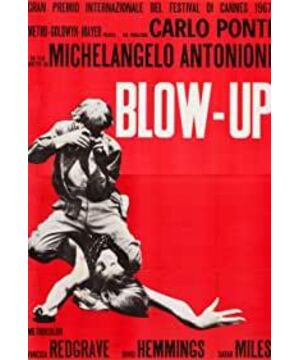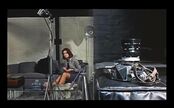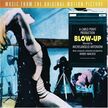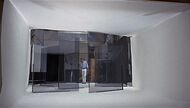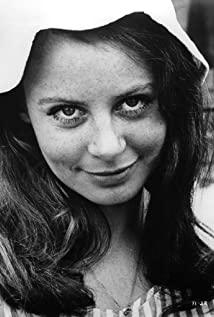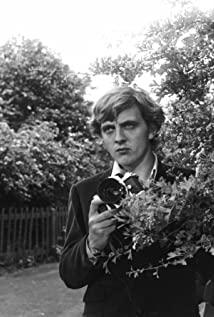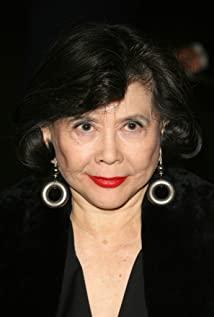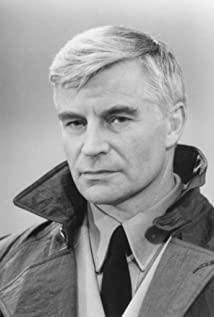In Italy, there are many people named Michelangelo, and there are many people named Antonioni, but there is only one person named Michelangelo Antonioni.
It's impossible for anyone who loves movies to be unfamiliar with the name Antonioni. Even after Antonioni's death in 2007, the film industry lamented that "in the 21st century, the masters of the film industry are gone."
Antonioni is an extremely powerful name. He is not just shooting movies. I think that movies are just a medium in Antonioni's hands. He is a master, not just a director. He did not shoot for the sake of making money or simply to love movies. He wanted to explain to the world the results of his exploration - the results of exploring the inner spiritual and social contradictions of human beings. In his view, this kind of exploration results can only be explained by the artistic type of film, which combines shadow and tone.
Whether in the Italian neorealist films he shot before or in this postmodernist film "BLOW UP", Antonioni's camera style is always messy and seemingly disordered, which means that he He can only be his master of loneliness, and never a business movie upstart with a bulging wallet. What Antonioni always wanted others to see was the truth behind those scattered shots.
The Chinese name of "BLOW UP" is "Zoom". At first glance, it seems that "Zoom" is about: photographer Thomas took a photo of a man and a woman in love in a park, and was later found by the woman in the photo to ask for it. Back to the photo, Thomas disagreed. After a few days, the woman relentlessly pursued Thomas' home, asking for the negative of the photo at all costs. This made Thomas feel very strange. He carefully studied the photos he took, using magnification technology to enlarge and enlarge the photos, and found a murder - a man and a woman were not lovers, they were arguing, and the grass next to them One of the men killed the man who was arguing with the woman with a pistol. Thomas found the body still in the park according to the clues in the photo. He was very surprised, but all his friends did not believe him. Thomas had to go to the park again, but the body was gone. He was hesitantly walking on the street, and he saw the woman in the photo again. He ran to the woman, but the woman disappeared on the street corner.
The plot of this story is reminiscent of Hitchcock, from the silent blank and silent processing, to the plot arrangement, it is complicated and confusing, making people think it is a suspense film. However, you will find out later that Antonioni is not a business person after all, he does not make suspense films, he makes art films. The whole "zoom in photo" story is only a small part of the film, and most of it is still made up of a few scattered shots. This disappointed a lot of people, but more people were amazed!
Looking at the scattered footage, we may be able to find a little bit of the content behind the film, and let Antonioni lead us to analyze the world. He's telling us, zoom in and zoom out and zoom in on the world, and what you see isn't necessarily true. In the film, the photographer Thomas is a person who only believes in his own camera lens. He believes that only what is captured is credible. But is the park scene he photographed real? He was bewildered by a series of seemingly real events that seemed unreal. He walked into the nightclub and coaxed everyone to steal the guitar handle, and finally snatched it and discarded it like garbage. This is also a means of expressing a person with an extremely contradictory heart, right? At the end of the film, even he himself was shaken. He joined the group of performance art clowns and helped them pick up the tennis ball that did not exist. What Antonioni wants to tell us is not a story, but the nature of the world, the contradictions of the human spiritual world.
The tone of the whole film is cold, just like his pursuit of a realistic film style. Even when the male protagonist Thomas takes a photo of a man and a woman in the park, when the sun shines lightly on the tender green lawn, it can still make people feel the cold behind the park's morning silence. Even the group of lively clowns at the beginning and end of the film is the same, the snow-white face, dark clothing, and the occasional red are so cold in the dark main color. The background is always dark brown streets and houses, but in the midst of the lively, the audience can always calmly rush to the essence behind the image. Thomas is taking pictures of the models. Three huge black gauze pieces separate the models into a diagonal line. The modern music, the single color block, and the cool smile on the models' faces remind me of the wave that emerged in the last century. Populism and a series of new forms of artistic expression. And whether Thomas is shooting a group of models at the beginning of him, or a woman in a "zoom in photo" incident, the background behind everyone is always a pure color. If overlapping strong colors represent passion, then a single dark color represents reason. Looking back at the film, we can see that the color is almost always single, single, single throughout the film. Occasional variegated colors mixed into the shot will also make people involuntarily classify it into the main color atmosphere. The use of color is postmodernist, rational, and cold and realistic. Antonioni can let his films play like a palette. The painter uses the palette to control the longitude and latitude lines of the canvas, while the master Antonioni Use his palette to control how well the audience fits into the film. He can freely let the audience not only integrate into the film, but also know that he is a bystander. He will not tell the audience with clear lines: Look, this is how life is magnified, and it is questionable. Instead, let the audience taste the philosophy of the film by using audio-visual language.
The only two uses of color that count as hot are in "Thomas and the Models" scene - although maybe purple still counts as cool and "Thomas in the nightclub". In the scene of Thomas playing with the models, three naked young men are buried in a large block of pure purple curtains, just like three flesh-colored minds integrated into the chaotic world, the looming flesh-colored in purple Struggling in the curtain, and finally calm to the point of compromise. And when a confused Thomas enters the nightclub, decadent colors fill the shot. Dim yellow lights, colorful sofas, and heads of various colors crowded under the stage of the performance band afterward. After that, I rushed out of the nightclub and came to the street. The warm colors of the neon lights seemed to inherit the decadence and confusion in the nightclub. But neon lights are made of lines after all, and they are still swallowed up by the icy night.
In 2008, when it was time for our generation to step into society again, Master Antonioni perfectly used his "BLOW UP" in the 1960s to point us out a way to explore the essence and spiritual contradictions.
View more about Blow-Up reviews


